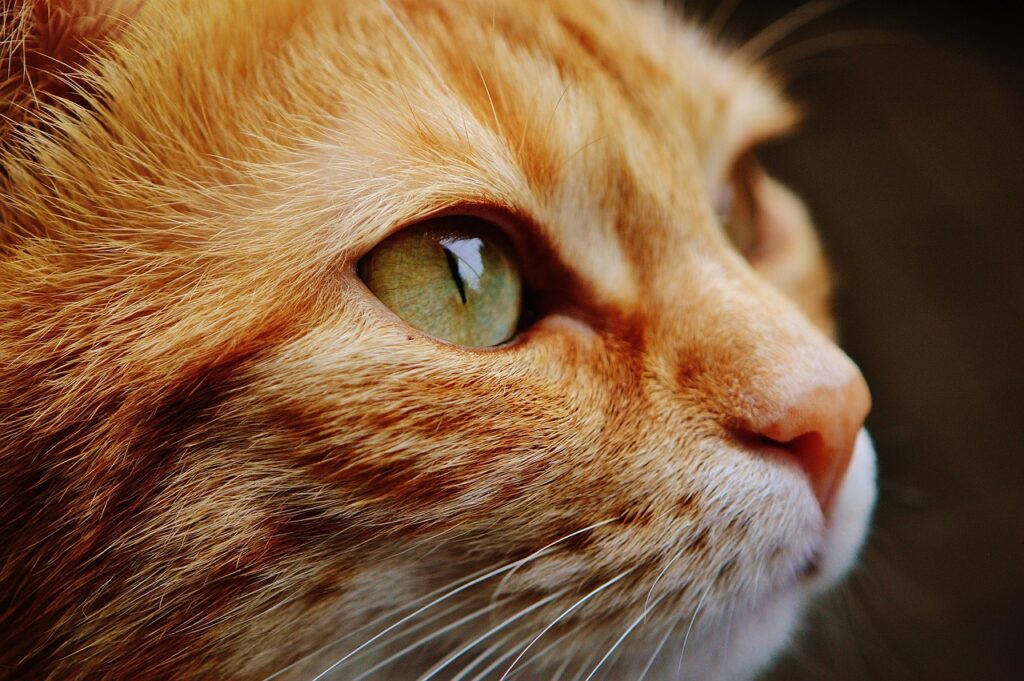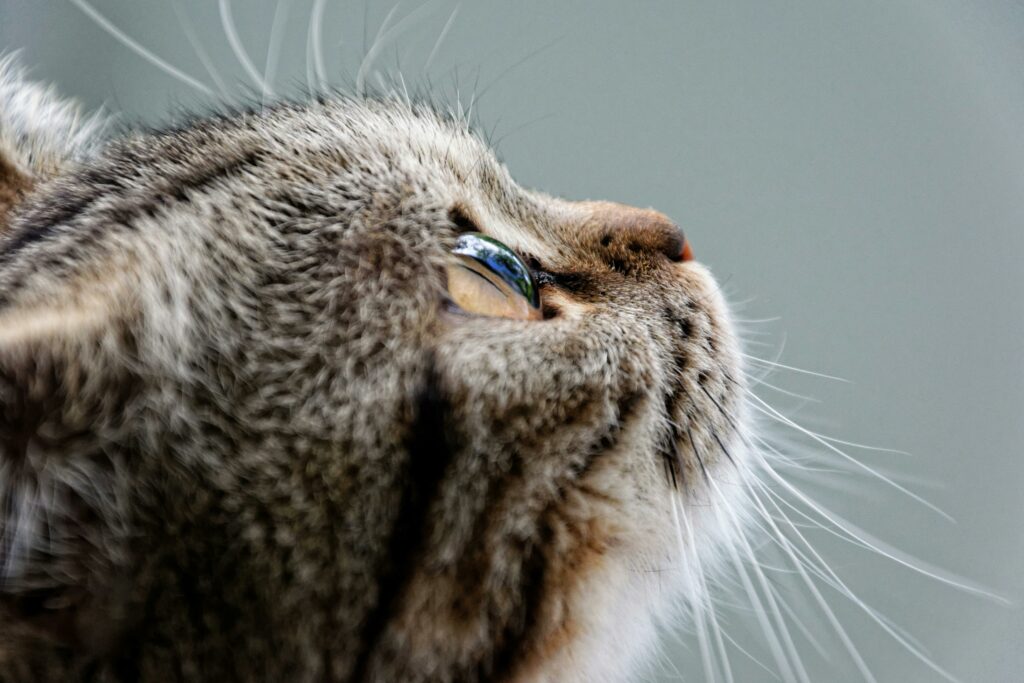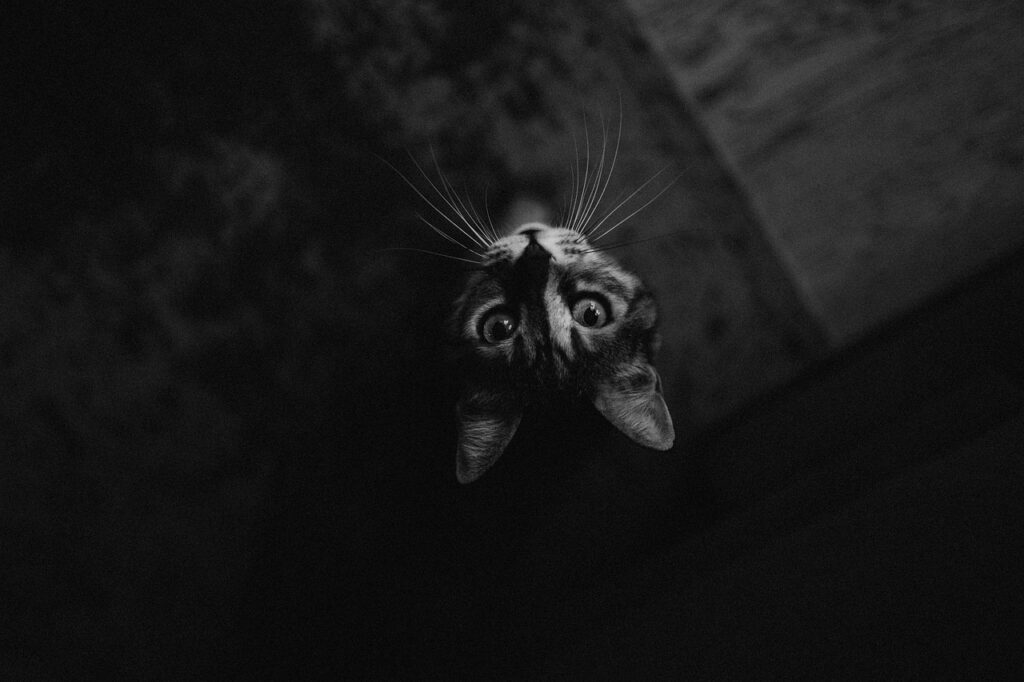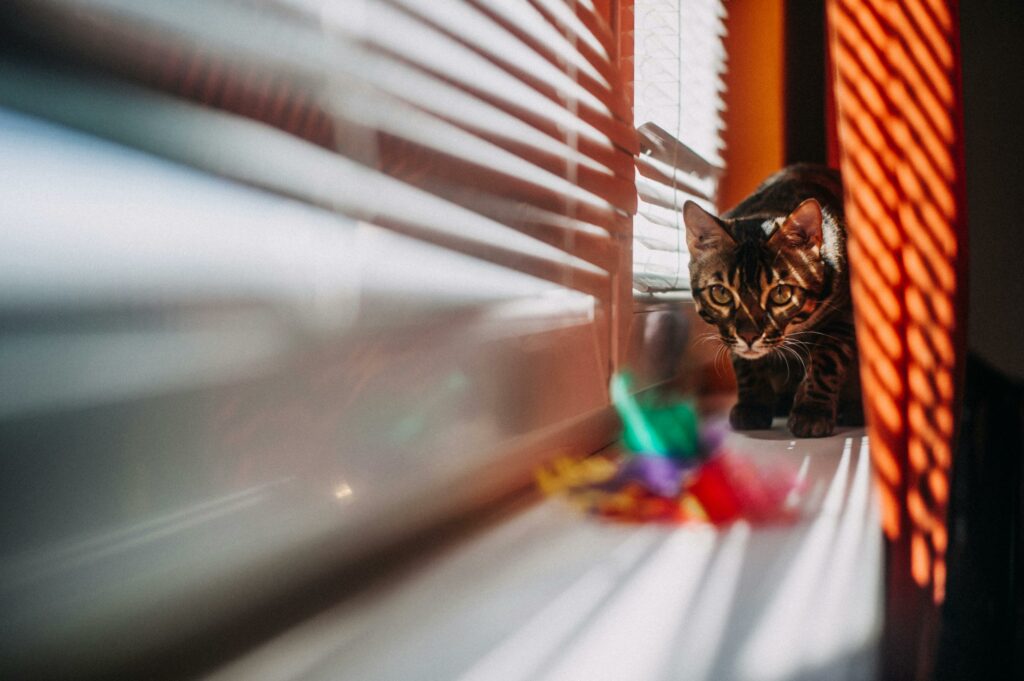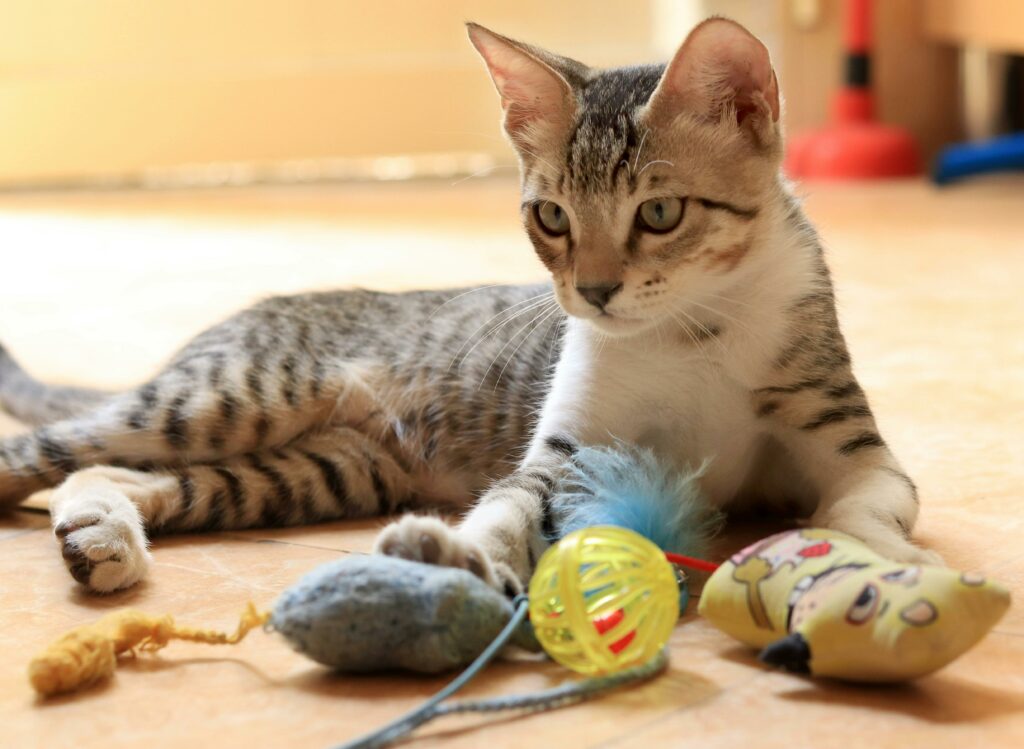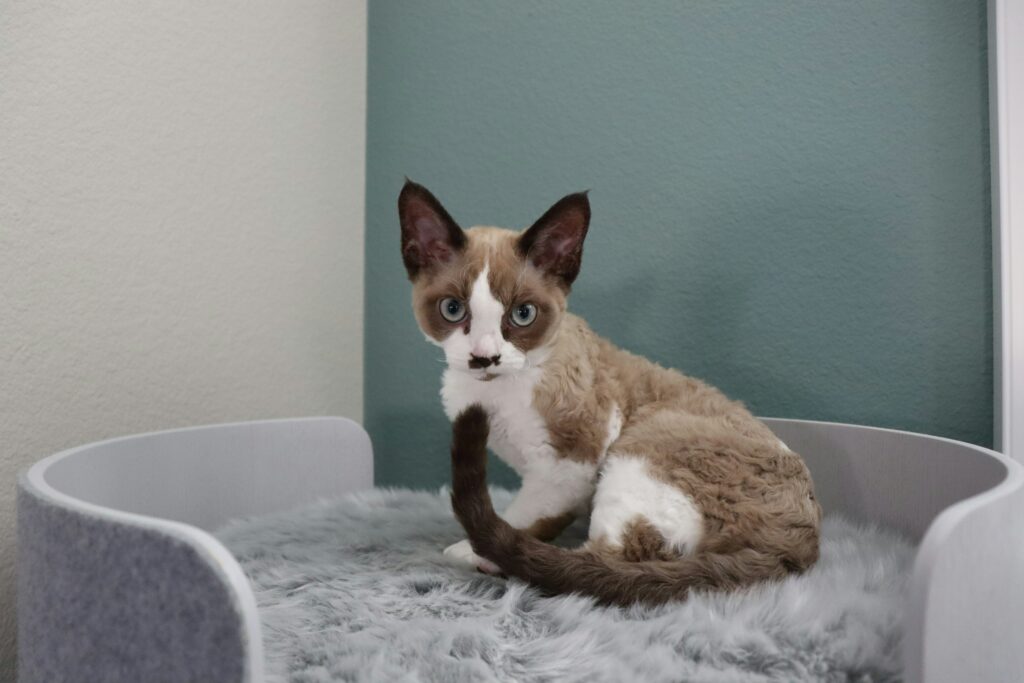
The Devon Rex is a relatively rare cat breed that has captured the hearts of feline enthusiasts worldwide since its discovery in the 1960s. These cats are instantly recognizable for their distinctive wavy coat and large, expressive eyes that give them an almost elfin appearance. Devon Rex cats are known for their playful, mischievous nature and deep bond with their human companions, making them increasingly popular as family pets despite their somewhat uncommon status in the cat world.
Origins and History of Devon Rex Cats
This cat breed traces its lineage to a single curly-coated kitten discovered in Buckfastleigh, Devon, England in 1960. This kitten, named Kirlee, had a unique genetic mutation that created his distinctive wavy coat. Initially thought to be related to the Cornish Rex (discovered a decade earlier), genetic testing later proved that the Devon Rex mutation was entirely different, making it a distinct breed with its own characteristics.
The breed was officially recognized by major cat associations in the late 1960s and early 1970s, including The International Cat Association (TICA) and the Cat Fanciers’ Association (CFA). While Devon Rex cats remain somewhat uncommon compared to popular breeds like the Maine Coon or Persian, they have a dedicated following of enthusiasts who appreciate their unique appearance and charming personalities.
Physical Characteristics of Devon Rex Cats
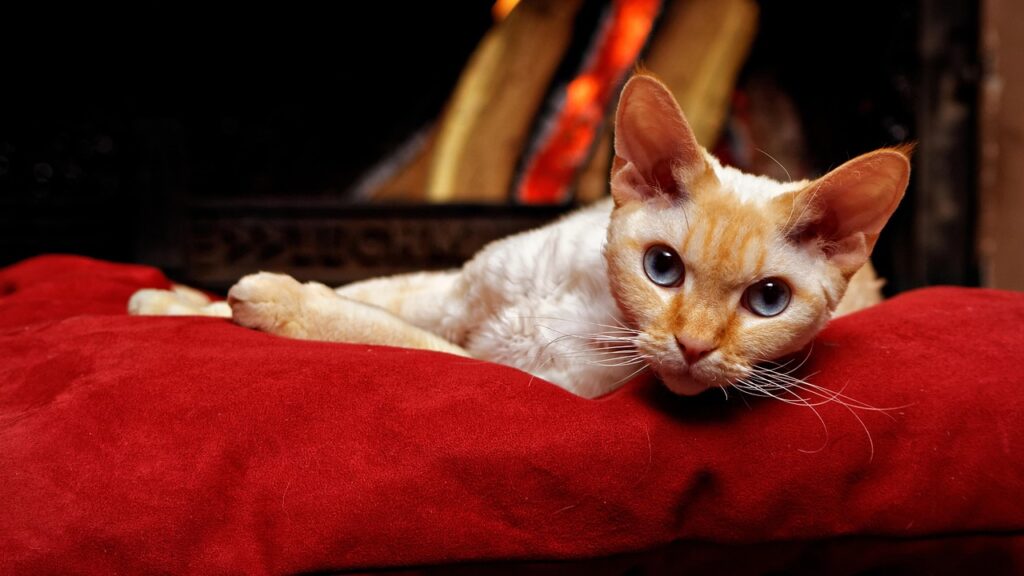
The Signature Coat
The most defining feature of Devon Rex cats is their soft, wavy coat that feels like suede to the touch. Unlike most cat breeds with three types of hair (guard, awn, and down), Devon Rex have primarily down hair with very few guard hairs. The unique mutation affects the hair shaft, causing it to curl instead of growing straight. Some Devon Rex cats have extremely curly coats, while others have a more subtle wave pattern.
Distinctive Facial Features
Devon Rex cats have a striking facial structure with large, wide-set eyes, prominent cheekbones, and oversized ears set low on the head. Their face is often described as pixie-like or elfin, giving them an almost otherworldly appearance that many find irresistible. Their whiskers and eyebrows are also often curly or broken, adding to their unique look.
Size and Body Type
Most Devon Rexs are medium-sized with a slender yet muscular build. They typically weigh between 6-9 pounds when fully grown, with males generally being larger than females. Despite their delicate appearance, they have a surprisingly sturdy frame and are known for their athletic abilities.
Personality and Temperament
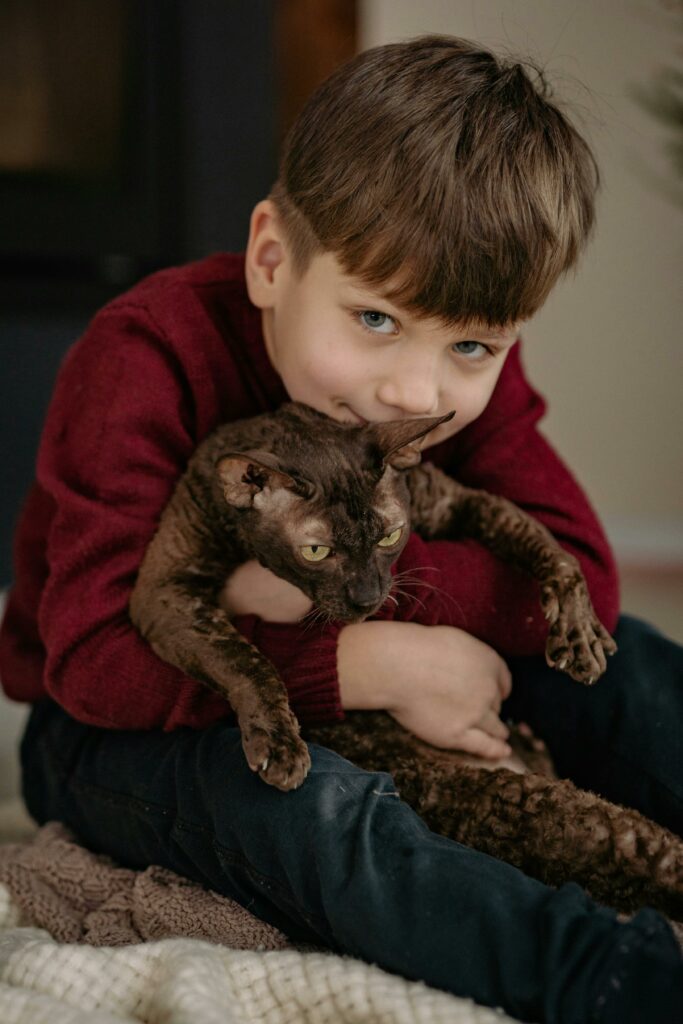
Playful and Energetic Nature
Devon Rex cats maintain a kitten-like playfulness well into adulthood. They are highly active and curious, often exploring every corner of their home and finding creative ways to entertain themselves. Many owners describe them as part cat, part monkey, and part dog due to their climbing abilities and tendency to follow their humans around the house.
Intelligence and Trainability
These cats are remarkably intelligent and quick learners. Devon Rex cats can be taught to perform tricks, respond to commands, and even walk on a leash with proper training. Their problem-solving abilities often surprise first-time owners who might not expect such cognitive flexibility from a cat.
Social and Affectionate Behavior
Perhaps most endearing is the Devon Rex’s deep attachment to their human companions. These cats are exceptionally social and hate being left alone for long periods. They often seek out warm spots on their owner’s lap, shoulders, or even under blankets. Many Devon Rex owners report that their cats sleep under the covers with them, enjoying the warmth and closeness.
Health Considerations for Devon Rex Cats
While generally healthy, Devon Rex cats can be prone to certain genetic conditions that potential owners should be aware of:
- Hypertrophic cardiomyopathy (HCM), a form of heart disease
- Devon Rex myopathy, a muscle weakness condition specific to the breed
- Urticaria pigmentosa, a skin condition that causes lesions
- Patellar luxation, where the kneecap dislocates
Regular veterinary check-ups and genetic testing from reputable breeders can help minimize these health risks. With proper care, Devon Rex cats typically enjoy a lifespan of 12-15 years.
Caring for a Devon Rex
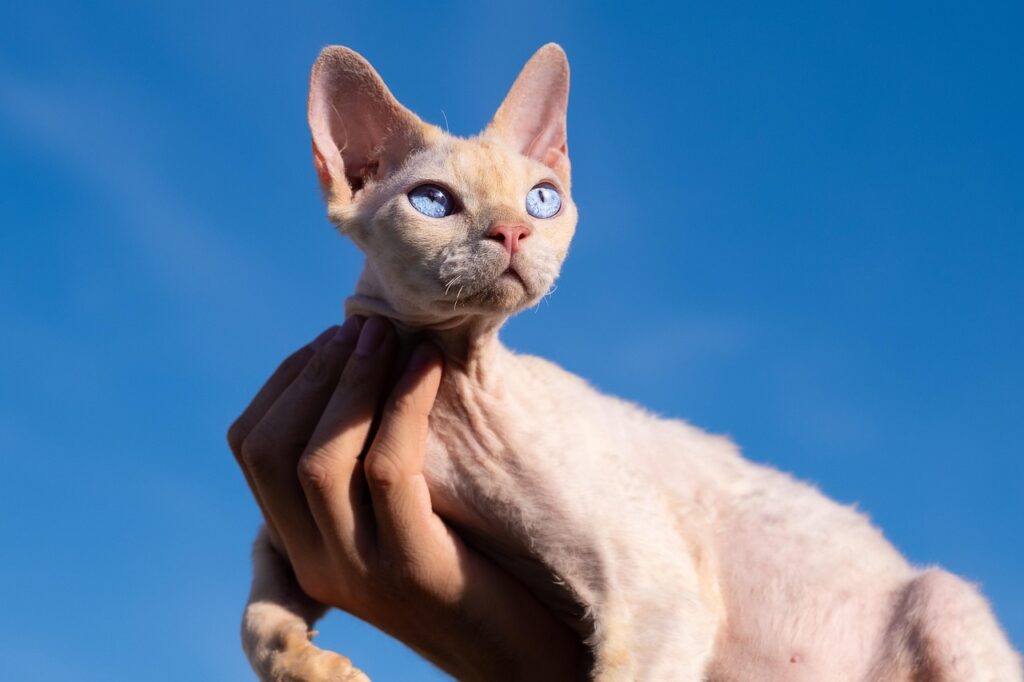
Grooming Requirements
Despite their curly coats, Devon Rex cats require minimal grooming. Their fine fur doesn’t mat easily, and excessive brushing can actually damage their delicate coat. A gentle wipe with a soft cloth or damp hand once a week is usually sufficient to remove loose hairs. However, their large ears need regular cleaning to prevent wax buildup.
Environmental Needs
Devon Rex cats have a higher body temperature than most cats and minimal coat insulation, making them sensitive to cold. They often seek out warm spots in the home and may need sweaters during colder months. Their thin coat also means they’re more susceptible to sunburn, so limiting direct sun exposure is important.
Dietary Considerations
These active cats have a high metabolism and often require more calories than other breeds of similar size. Quality protein-rich diets are essential to maintaining their muscle tone and energy levels. Some Devon Rex cats are prone to dental issues, so dental-friendly dry food can be beneficial alongside regular teeth cleaning.
Living with a Devon Rex Cat
Devon Rex cats thrive in homes where they receive plenty of attention and interaction. They get along well with children, other cats, and even cat-friendly dogs, making them excellent additions to multi-pet households. Their playful antics and affectionate nature make them entertaining companions for families.
These cats are particularly well-suited for apartment living due to their adaptable nature and moderate exercise needs. However, providing climbing opportunities and interactive toys is essential to keep their active minds engaged and prevent boredom.
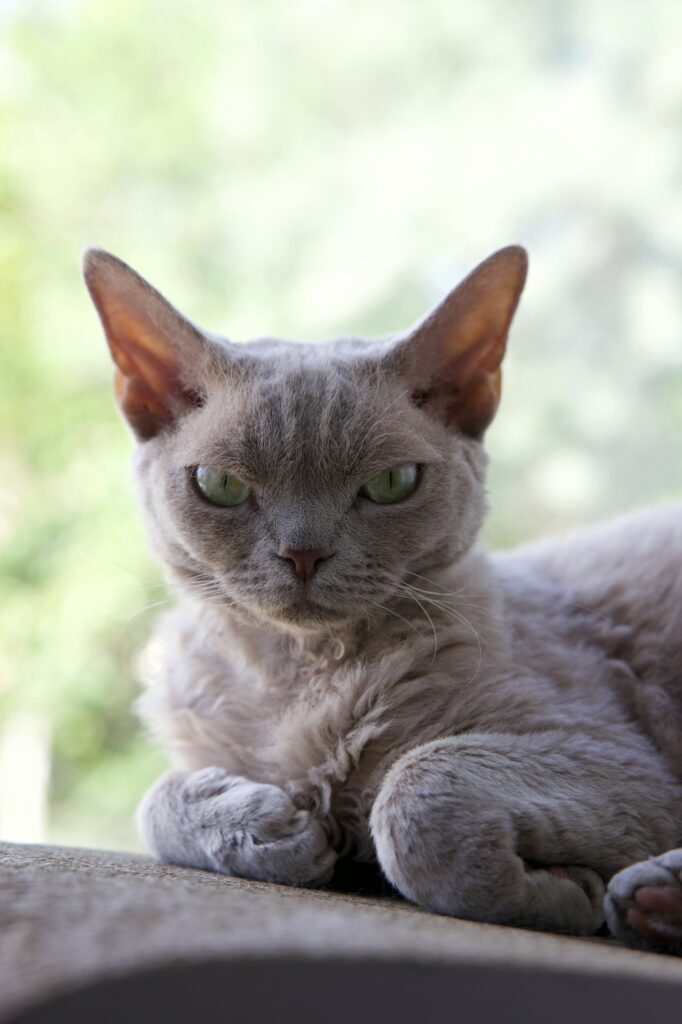
Conclusion
Devon Rex cats offer a perfect blend of distinctive appearance, playful personality, and devoted companionship. Their unique curly coats and elfin faces make them stand out in the cat world, while their intelligence and affectionate nature make them beloved family members. For those seeking an interactive, loving feline companion with a dash of whimsy, the Devon Rex might just be the perfect match.
References
The Cat Fanciers’ Association, Devon Rex – https://cfa.org/breed/devon-rex/
Sphynx and Devon Rex Coats – https://vgl.ucdavis.edu/test/sphynx-and-devon-rex-coats
VCA animal hospitals – https://vcahospitals.com/know-your-pet/cat-breeds/devon-rex
petMD, Devon Rex – https://www.petmd.com/cat/breeds/devon-rex































